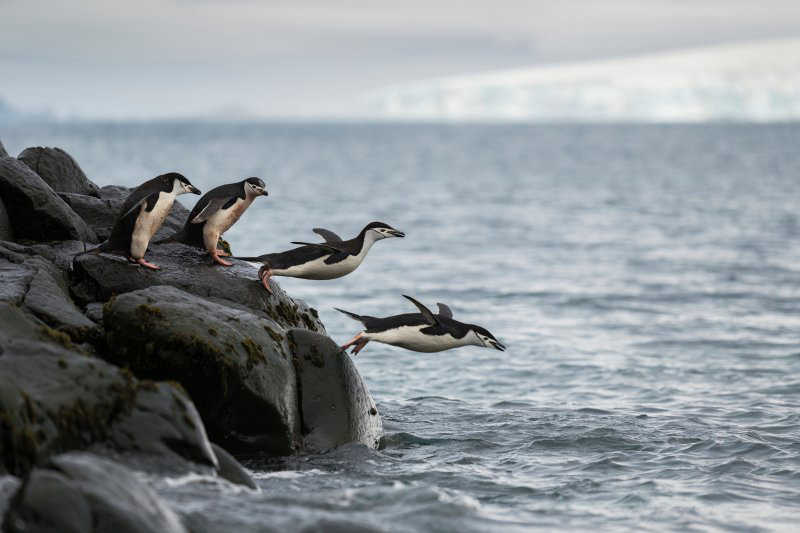
Chinstrap penguins are exquisitely adapted to their environment. They live and breed in some of the world’s harshest conditions, nesting in the windblown, rocky coves of the Antarctic Peninsula, a strip of land comprising the northernmost part of the frigid continent. In water they are precision hunters, darting after krill, the tiny shrimp-like crustaceans that are their sole food source, utilizing barbed tongues engineered for catching the slipperiest of prey. On land, these 2-2.5-foot-tall flightless birds are prodigious mountaineers, able to scale rocky escarpments in spite of their ungainly waddle. Their perfect adaptation to local conditions makes them the ideal barometer for the future of the region. If anything changes in the marine environment, the health of chinstrap penguins will be one of the most reliable indicators. They are the canaries of the Southern Ocean.
And these endearing, black and white emissaries from Antarctic waters are starting to disappear.
Scientists conducting a chinstrap census along the Antarctic Peninsula have discovered drastic declines in many colonies, with some seeing population reductions of up to 77% since they were last surveyed, about 50 years ago. The independent researchers, who hitched a ride on a Greenpeace expedition to the region, found that every single one of the 32 colonies surveyed on Elephant Island, a major chinstrap outpost, had declined. Overall, the island’s total chinstrap population had dropped by more than half, from 122,550 breeding pairs in 1971 to 52,786 in January 2020. “Such significant declines suggest that the Southern Ocean’s ecosystem is fundamentally changed from 50 years ago, and that the impacts of this are rippling up the food web to species like chinstrap penguins,” says Heather J. Lynch, associate professor of ecology & evolution at Stony Brook University in upstate New York, who designed the study.
“There is something broken in the Southern Ocean,” adds ornithologist Noah Strycker, a member of the penguin census team, and the author of the 2015 book The Thing with Feathers. “Our best guess on why that could be is climate change, which we know is hitting the Antarctic Peninsula region harder than…practically anywhere else in the world except the Arctic.” Warming waters reduce the sea ice and the phytoplankton that krill depend upon for feeding and survival. Ocean acidification, a side effect of increasing global carbon emissions, also impacts their ability to reproduce.
发表回复